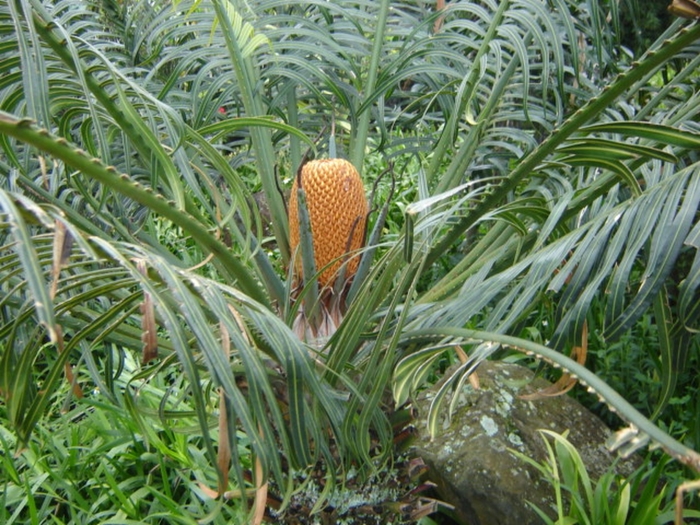Queen Sago
(Cycas circinalis)
Queen Sago (Cycas circinalis)
/
/

© Tereso Hernández Morales
CC BY 4.0
Image By:
© Tereso Hernández Morales
Recorded By:
Copyright:
CC BY 4.0
Copyright Notice:
Photo by: © Tereso Hernández Morales | License Type: CC BY 4.0 | License URL: http://creativecommons.org/licenses/by/4.0/ | Uploader: tereso30 | Publisher: iNaturalist |

























Estimated Native Range
Summary
Cycas circinalis, commonly known as Queen Sago, is a slow-growing, evergreen cycad native to dry, deciduous forests and scrublands in southern India. It is not a true palm but resembles one, with a thick trunk and a crown of large, feathery, pinnate leaves that can reach up to 3 meters in length. This species can grow up to 10 meters tall, though it often remains much smaller in cultivation. The plant produces cones; male cones are elongated and female cones are round. It is dioecious, with male and female reproductive structures on separate plants. The foliage is dark green, and while not flowering in the traditional sense, the cones can add architectural interest to the garden.
Queen Sago is valued for its tropical appearance and is often used as a focal point in landscapes, container gardens, and conservatories. It is drought-tolerant once established and prefers well-drained soil with organic matter. It thrives in full sun to partial shade. In cultivation, it requires minimal maintenance, but gardeners should be cautious as all parts of the plant, especially the seeds, contain neurotoxins. Regular removal of offsets and suckers is necessary to maintain a single-stemmed appearance. It is important to note that Cycas circinalis has become invasive in places like Hawaii, so it should be planted with care and monitored for unwanted spread.CC BY-SA 4.0
Queen Sago is valued for its tropical appearance and is often used as a focal point in landscapes, container gardens, and conservatories. It is drought-tolerant once established and prefers well-drained soil with organic matter. It thrives in full sun to partial shade. In cultivation, it requires minimal maintenance, but gardeners should be cautious as all parts of the plant, especially the seeds, contain neurotoxins. Regular removal of offsets and suckers is necessary to maintain a single-stemmed appearance. It is important to note that Cycas circinalis has become invasive in places like Hawaii, so it should be planted with care and monitored for unwanted spread.CC BY-SA 4.0
Plant Description
- Plant Type: Shrub, Tree
- Height: 10-20 feet
- Width: 8-15 feet
- Growth Rate: Slow
- Flower Color: N/A
- Flowering Season: Summer
- Leaf Retention: Evergreen
Growth Requirements
- Sun: Full Sun
- Water: Low
- Drainage: Fast, Medium
Common Uses
Drought Tolerant, Potted Plant
Natural Habitat
native to dry, deciduous forests and scrublands in southern India
Other Names
Common Names: Fern Palm, Crozier Cycas, False Sago, Sago Palm, Mundicalu
Scientific Names: , Cycas circinalis, Cycas circinalis f. circinalis, Cycas circinalis f. gothanii, Cycas circinalis f. undulata, Cycas circinalis subsp. circinalis, Cycas circinalis var. angustifolia, Cycas circinalis var. circinalis, Cycas circinalis var. glauca, Cycas circinalis var. vera
GBIF Accepted Name: